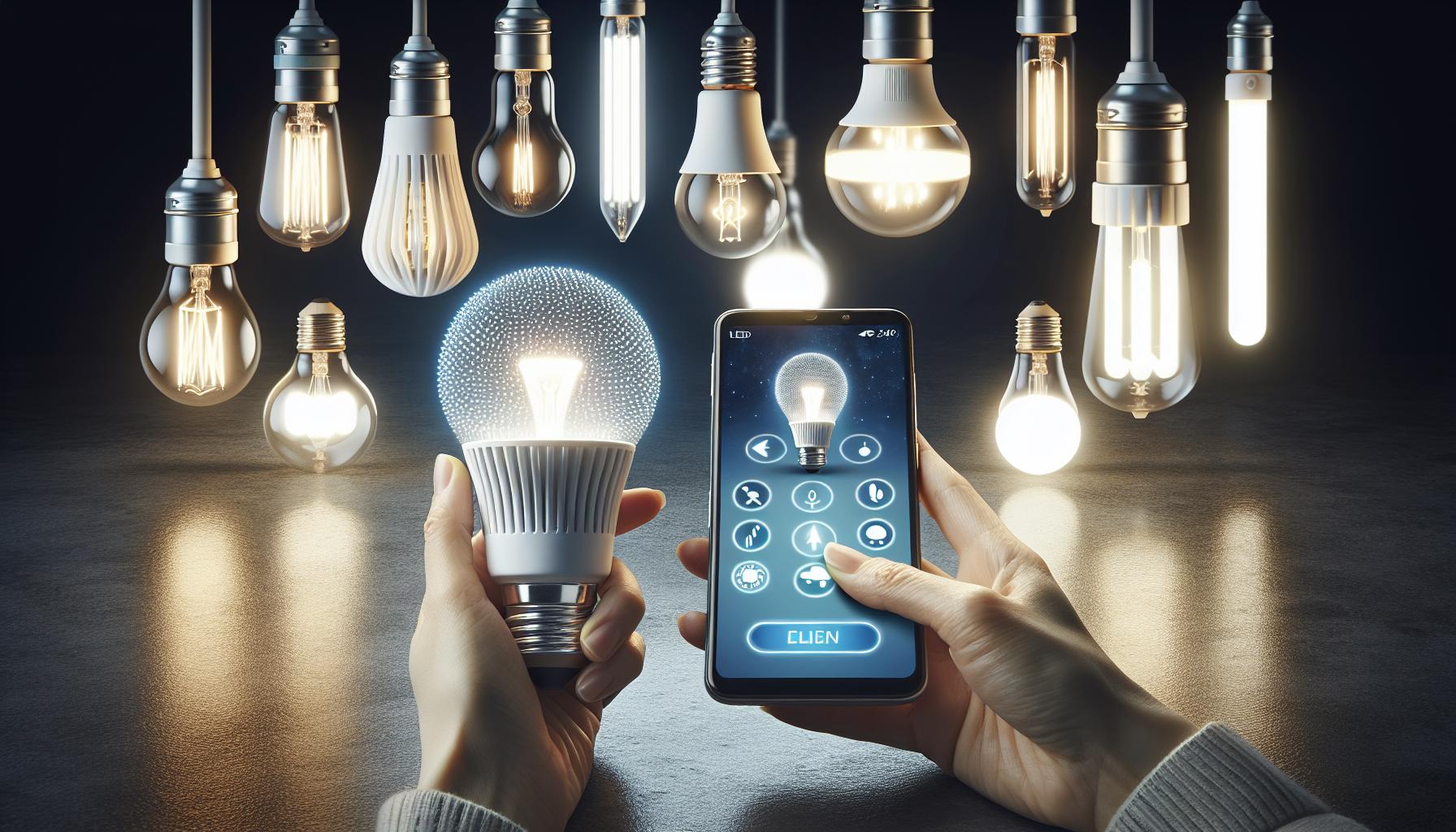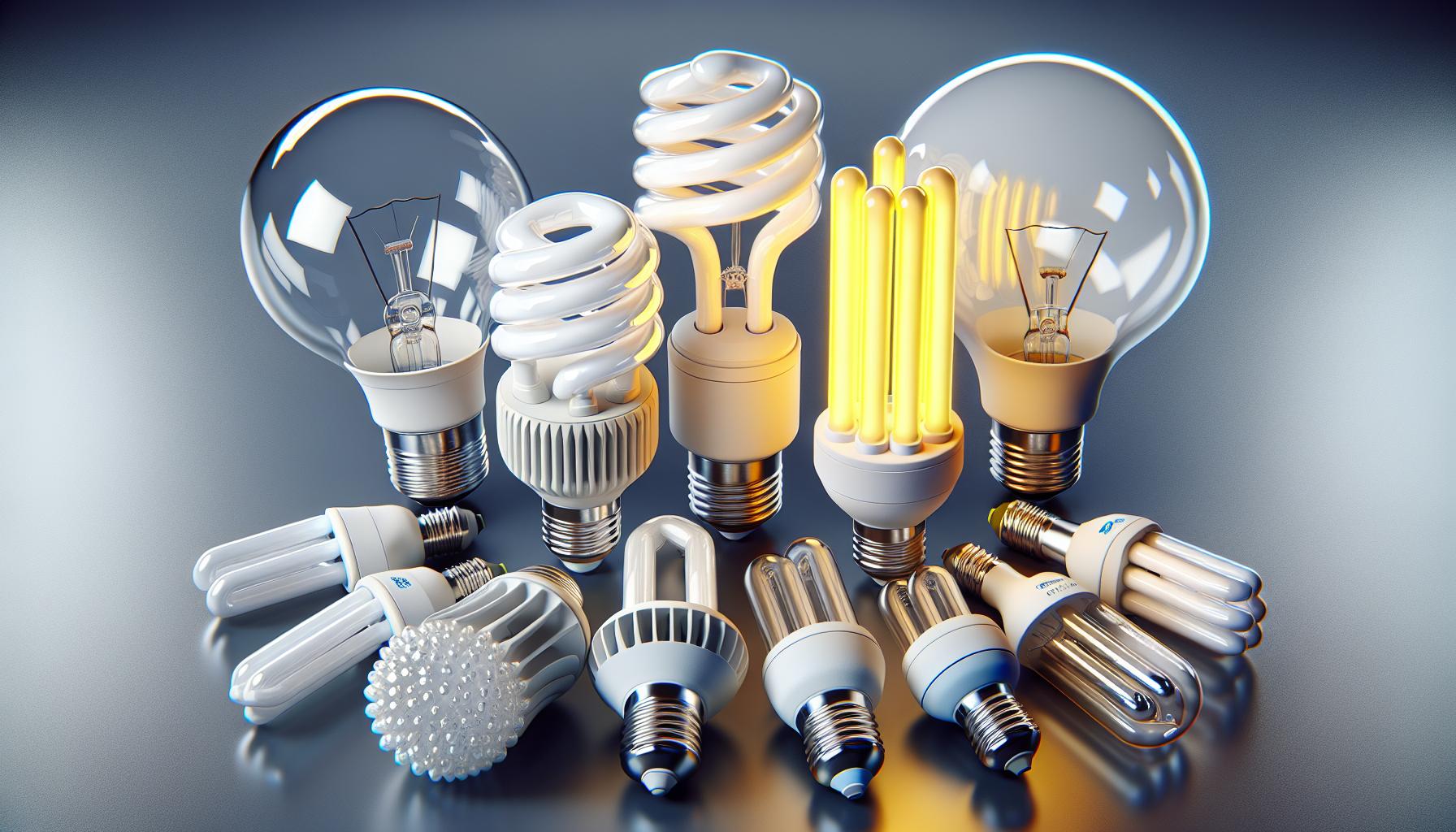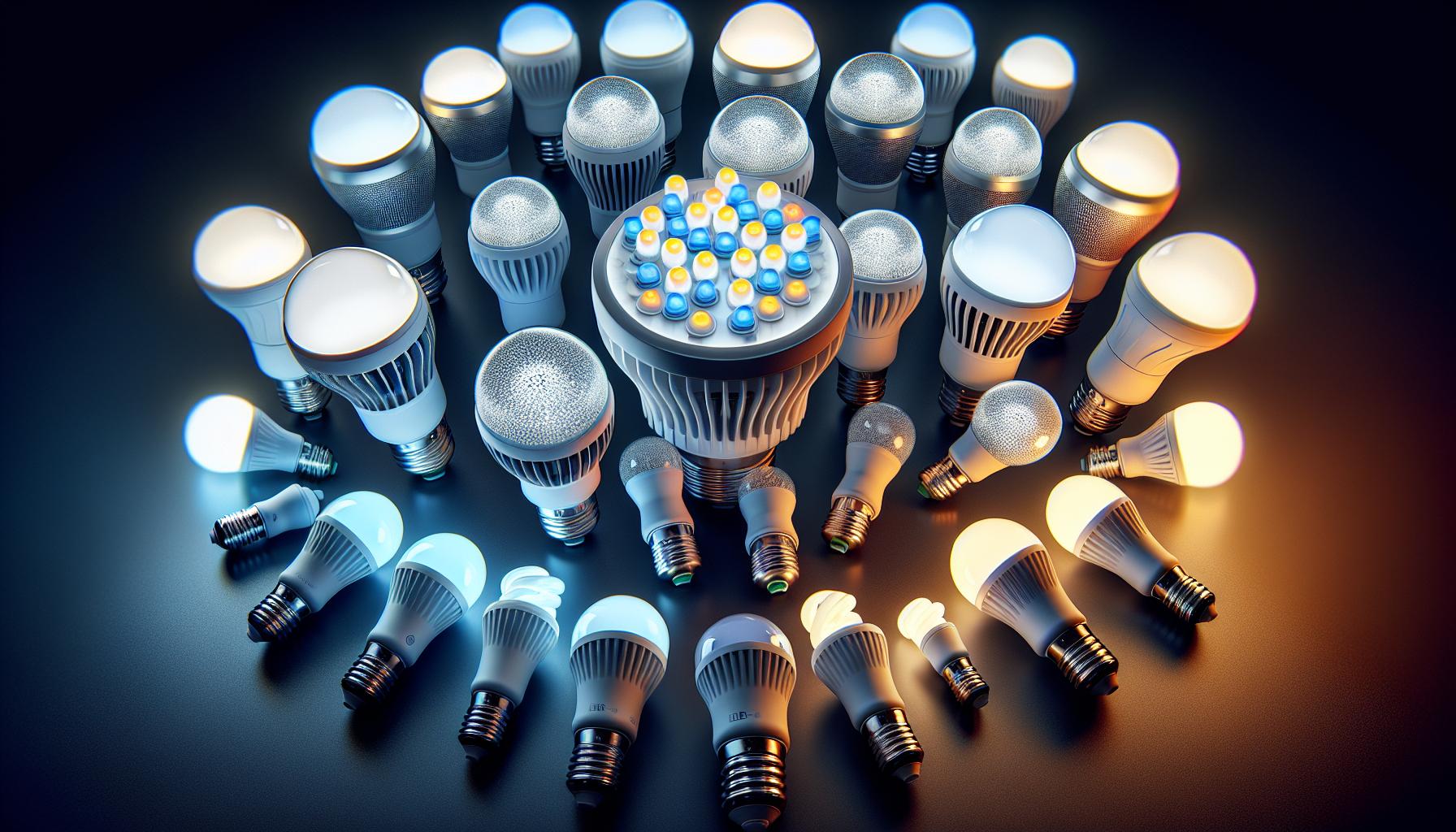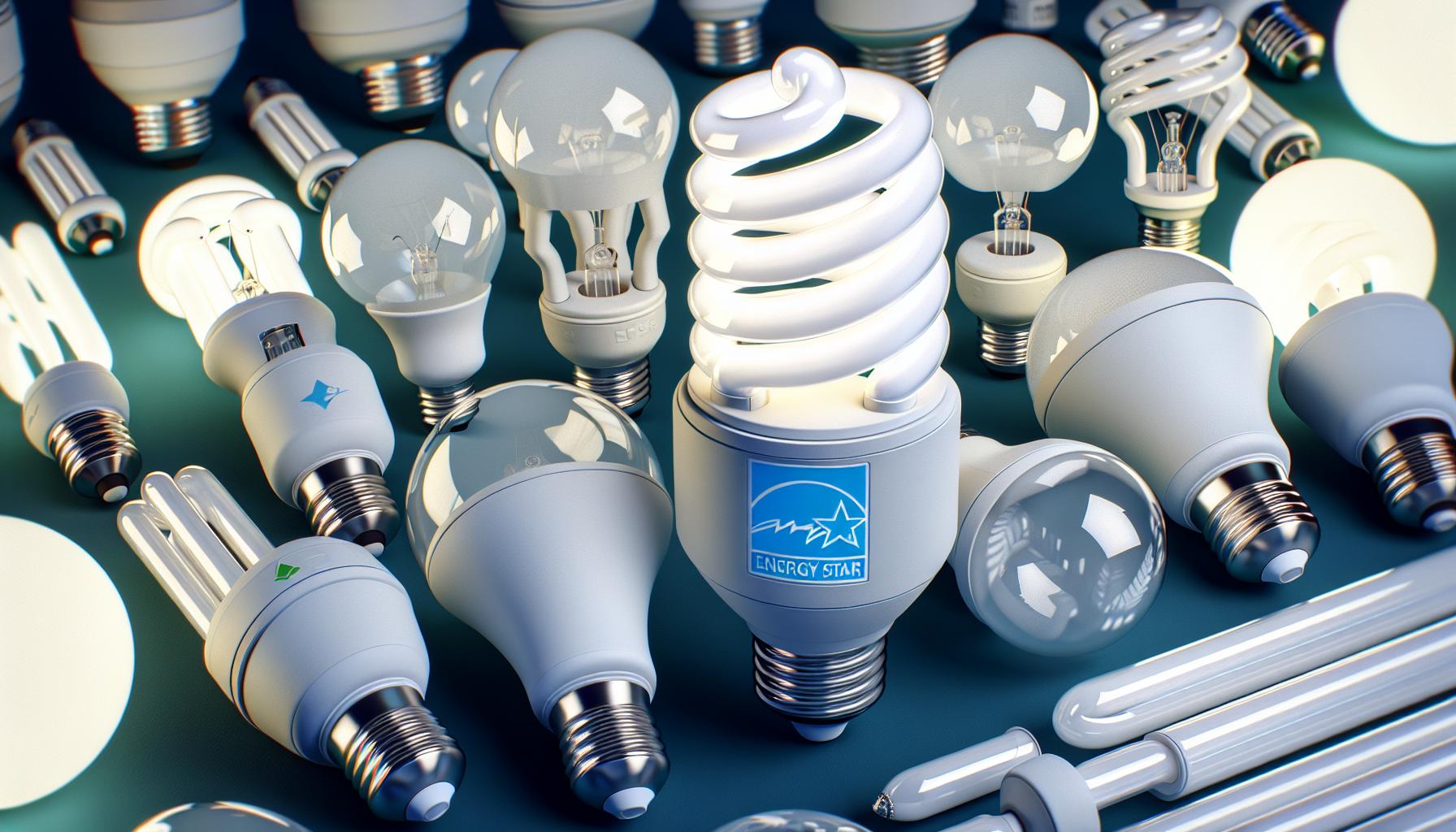Ever wondered why your energy bill’s been climbing? It might just be hanging above your head! The right light bulb can make all the difference in both your home’s ambiance and your monthly expenses.

In the quest for energy efficiency, not all bulbs are created equal. You’ve got options and it’s time to shine a light on the ones that’ll keep your energy use low and your savings high.
The importance of energy-efficient light bulbs
As you dive into your next home DIY project or evaluate how to spruce up your lighting, knowing the significance of energy-efficient light bulbs can make all the difference. When you choose the right kind of bulb, you’re not just illuminating your space—you’re also taking a step towards a more eco-friendly and cost-effective home.
Energy-efficient bulbs use up to 80% less energy than traditional incandescent bulbs. This isn’t just good for the planet; it’s great for your pocket too. By reducing the amount of energy needed for lighting, these bulbs drastically cut down on your utility bills. Over time, the savings add up, potentially freeing up funds for more of those home projects you love.
But it’s not just about the cost. Energy-efficient bulbs have a longer lifespan, which means you won’t find yourself on the ladder replacing them nearly as often. Think about the convenience of having lights that could last for years rather than months. This endurance score is a win for your schedule and your wallet.
Let’s talk specifics:
| Type of Bulb | Average Lifespan | Energy Used |
|---|---|---|
| Incandescent | 1,000 hours | 60 watts |
| Compact Fluorescent (CFL) | 8,000 hours | 14-15 watts |
| LED | 25,000 hours | 6-8 watts |
Going green with your lighting isn’t just a trendy choice; it’s becoming a necessity. Governments worldwide are realizing the importance of energy conservation and are starting to phase out less efficient bulbs. By choosing energy-efficient options, you’re staying ahead of the curve and ensuring your home meets future standards.
- Focus on lumens, not watts, when picking your bulbs.
- Consider smart bulbs for even greater energy management.
- Daylight LED bulbs can mimic natural light and may boost your mood.
Remember, while the upfront cost of energy-efficient bulbs might be a tad higher, the long-term savings and benefits to our environment are worth it. As a lighting enthusiast and home DIYer, you know quality and efficiency go hand in hand. So next time you’re browsing the lighting aisle, armed with this knowledge, you’ll make an informed and responsible choice that benefits you for years to come.
Understanding energy-saving technologies in light bulbs

If you’re diving into the world of energy efficiency, you’ll soon discover that not all light bulbs are created equal. The tech behind energy-saving bulbs is fascinating, and it all comes down to how they produce light and the materials they’re made from. Here’s a rundown of the core technologies that help these bulbs shine brighter, for longer, while sipping less power.
LED Technology: The Front-Runner in Efficiency
LEDs (Light Emitting Diodes) are the champions of energy efficiency. They use a semiconductor to convert electricity directly into light, without wasting energy on heat. That’s why they stay cool to the touch and last incredibly long. They’re a DIY dream as they fit almost any fixture and come in various colors and brightness levels.
- Pros: Up to 90% more efficient than incandescents
- Durability: Lasts up to 25 times longer
LEDs are the go-to if you’re looking for the best balance between energy savings and performance.
CFL Bulbs: The Compact Choice
Compact Fluorescent Lamps (CFLs) are those curly bulbs you’ve seen around. They work by driving an electric current through a tube containing argon and a small amount of mercury vapor. This generates invisible ultraviolet light that excites a fluorescent coating inside the tube to produce visible light.
- Pros: About 70% more efficient than incandescent bulbs
- Note: Contains mercury, so they require proper disposal
While not as efficient as LEDs, CFLs still offer significant energy savings and have a decent lifespan.
Halogen Incandescents: A Step Up from the Classic
Think of halogen incandescents as the upgraded version of old-school bulbs. They have a capsule inside that holds gas around a filament to increase efficiency. This design reduces energy waste but they’re still not as efficient as CFLs or LEDs.
- Pros: Better efficiency compared to traditional incandescents
- Consideration: They run hotter than LEDs and CFLs
Smart Bulb Integrations
« How to Make Light Bulbs Less Bright: Soften Any Room’s Glow
What Is Halogen Light Bulbs? Uncover Their Bright Advantages & Uses »
Advancements in smart home technology have brought us smart bulbs. These can be controlled remotely, change colors, adjust brightness, and even schedule on/off times. Smart bulbs often utilize LED technology, offering all the energy-saving benefits of LEDs, plus the added convenience of being controllable via smartphones or voice assistants.
Comparing different types of light bulbs

When you’re knee-deep in a DIY home project, the choice of light bulbs is just as crucial as picking out the perfect shade of paint. Understanding how various bulbs stack up against each other helps you make an informed decision. Here’s the lowdown on how they compare:
LED Bulbs stand tall as the reigning champions of energy efficiency. On average, LED bulbs use at least 75% less energy than traditional incandescent bulbs. Moreover, they can last 25 times longer – that’s years of light from a single bulb. It’s no surprise that when you’re aiming for cost savings and functionality, LEDs are the go-to choice.
CFL, or Compact Fluorescent Lamps, are also commendable for their energy-saving credentials. They consume roughly a third of the electricity compared to their traditional counterparts and have a respectable lifespan up to 10 times longer than incandescent bulbs.
Halogen Incandescents provide a different approach to efficiency. While not as advanced as LEDs or CFLs, they’re about 25% more efficient than older incandescents and work well with dimmer switches, giving you a bit more control over your space’s ambiance.
Don’t forget about Smart Bulbs. These innovative gadgets bring the futuristic touch of automation to lighting. They integrate seamlessly with smart home systems, allowing you to adjust brightness, set schedules, and change colors, all of which contribute to smart energy usage.
To put it all in perspective, let’s look at the hard numbers. Below is a table comparing average wattage used by each bulb type for a standard amount of light:
| Light Bulb Type | Average Wattage |
|---|---|
| LED | 10W |
| CFL | 14W |
| Halogen | 43W |
| Incandescent | 60W |
While the upfront cost of some energy-efficient bulbs may be higher, their longevity and lower operational costs quickly pay off. You’ll find that investing in the right type of bulb not only shines a light on your home projects but also casts a glow on your savings over time. Keep this guide in mind the next time you’re prowling the aisles for the perfect bulb. It might just be the brightest decision you’ll make for your home.
LED bulbs: the ultimate energy-saving option

As you delve into the world of energy-efficient lighting, LED bulbs rise as a beacon of efficiency. With your DIY skills, you understand that the right lighting is essential to any project, and LEDs are the gold standard. These bulbs boast a combination of longevity and energy conservation that’s hard to beat.
Let’s talk about semiconductors, the core of LED bulbs that convert electricity into light. This technology is not just energy-efficient; it’s what propels LED bulbs to the top of the energy-saving hierarchy. They use at least 75% less energy than traditional incandescent bulbs and last 25 times longer. Here’s a snapshot of what that efficiency looks like:
| Light Bulb Type | Energy Use | Lifespan |
|---|---|---|
| LED | Low | Up to 25 years |
| Incandescent | High | 1-2 years |
| CFL | Moderate | 7-9 years |
Pro tip: When choosing LEDs for your home, look for the lumens, not watts, to get the brightness you desire. Lumens measure the amount of light produced, a much more reliable indicator of the brightness you’ll actually experience.
Going beyond energy savings, LEDs provide superior light quality and come in various color temperatures. Whether you’re painting a room or assembling a DIY bookshelf, you’ll find LEDs offer a range of hues from warm, inviting lights to cool, daylight tones—perfect for any setting or mood.
Remember that LEDs also outshine in durability. They’re resistant to breakage and immune to sudden impacts, which often spell the end for their frail incandescent cousins. And if you love tech gadgets, smart LED bulbs integrate seamlessly with home automation systems, allowing you to control lighting using your smartphone or voice commands.
So while your inner DIY enthusiast may be excited about the possibility of a home bathed in cost-effective, high-quality lighting, considering LEDs is not just about preference—it’s a smart choice for both your home and the environment. Next time you’re embarking on a lighting project, think of LEDs as your formidable ally in the quest for energy efficiency.
Other energy-efficient lighting alternatives

While LEDs are the frontrunners in the energy-saving race, there are other bulbs that also take the cake when it comes to cutting down your power bills. Compact Fluorescent Lamps (CFLs), for instance, are a popular choice for many homeowners like you who enjoy a bit of DIY around the house.
CFLs have a distinct, spiral design and work by driving an electric current through a tube containing argon and a small amount of mercury vapor. This generates invisible ultraviolet light that excites a fluorescent coating on the inside of the tube to produce visible light.
Here’s a quick glance at their benefits:
- Energy Savings: They consume about 70% less energy than traditional incandescent bulbs.
- Lifespan: CFLs can last up to 9 years with normal usage.
- Cost: Initially more expensive than incandescents, but the long-term savings on energy bills make them a savvy choice.
Another alternative is Halogen Incandescents. These bulbs have a capsule inside that holds gas around a filament to increase bulb efficiency. If you’re aiming for a touch of warmth in your lighting setup, these might be your go-to as they provide a color closer to that of traditional incandescents.
Check out their advantages:
- Efficiency: They are about 20-30% more energy efficient than traditional incandescents.
- Dimmable: Unlike many CFLs, most halogen incandescents can be dimmed, giving you control over light intensity and energy use.
- Versatility: They come in a wide variety of shapes and sizes for different applications.
Remember to look for the ENERGY STAR label when shopping to ensure you’re getting a product that meets strict efficiency guidelines. Energy-efficient lighting isn’t just a smart move for your wallet; it also contributes to a more sustainable planet by reducing greenhouse gas emissions. Each energy-efficient bulb you screw into a socket at home makes a difference. So next time you’re knee-deep in a lighting project, think about these alternatives as a way to upgrade not only your home’s aesthetics but also its energy footprint.
Conclusion
So you’ve seen the benefits and the advancements in light bulb technology. LED bulbs stand out as the top choice for energy efficiency and long-term savings. Remember, switching to energy-efficient lighting isn’t just about reducing your electricity bill—it’s also about contributing to a healthier planet. By choosing the right bulb, you’re making a small change with a big impact. It’s time to light up your home smarter and greener!
Frequently Asked Questions
What are the most energy-efficient light bulbs?
LED bulbs are currently the most energy-efficient lighting option available. They utilize a semiconductor to convert electricity into light effectively.
How do LEDs compare to traditional bulbs in terms of efficiency?
LEDs are significantly more energy-efficient compared to traditional incandescent bulbs, using up to 75% less energy and lasting 25 times longer.
What are Compact Fluorescent Lamps (CFLs)?
CFLs are a type of energy-saving light bulb that use a different technology than LEDs, requiring less energy than traditional bulbs and can last up to 10 times longer.
What are the benefits of Halogen Incandescents?
Halogen Incandescents offer better energy efficiency than traditional incandescents, are fully dimmable, and provide excellent color rendering, making them a versatile lighting choice.
Why should consumers consider energy-efficient lighting?
Energy-efficient lighting options like LEDs, CFLs, and Halogen Incandescents can result in significant cost savings on energy bills and contribute to environmental sustainability by reducing energy consumption.




